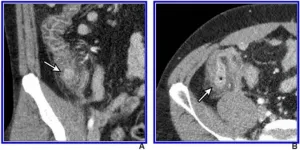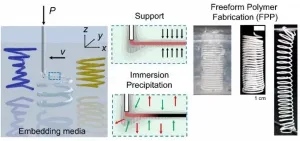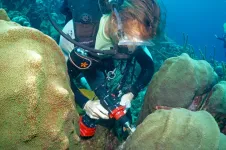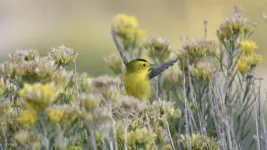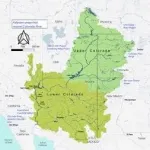Transforming crop and timber production could reduce species extinction risk by 40%
2021-04-08
(Press-News.org) Ensuring sustainability of crop and timber production would mitigate the greatest drivers of terrestrial wildlife decline, responsible for 40% of the overall extinction risk of amphibians, birds and mammals, according to a paper published today in Nature Ecology & Evolution. These results were generated using a new metric which, for the first time, allows business, governments and civil society to assess their potential contributions to stemming global species loss, and can be used to calculate national, regional, sector-based, or institution-specific targets. The work was led by the IUCN Species Survival Commission's Post-2020 Taskforce, hosted by Newcastle University (UK), in collaboration with scientists from 54 institutions in 21 countries around the world.
"For years, a major impediment to engaging companies, governments and others in biodiversity conservation has been the inability to measure the impact of their efforts," said IUCN Director General Dr Bruno Oberle. "By quantifying their contributions, the new STAR metric can bring all these actors together around the common objective of preserving the diversity of life on Earth. We need concerted global action to safeguard the world's biodiversity, and with it our own safety and wellbeing."
The authors applied the new STAR (Species Threat Abatement and Restoration) metric to all species of amphibians, birds, and mammals - groups of terrestrial vertebrate species that are comprehensively assessed on the IUCN Red List of Threatened Species. They found that removing threats to wildlife from crop production would reduce global extinction risk across these groups by 24%. Ending threats caused by unsustainable logging globally would reduce this by a further 16%, while removing threats associated with invasive alien species would bring a further 10% reduction, according to the paper. STAR can also be used to calculate the benefits of restoration: global extinction risk could potentially be reduced by 56% through comprehensive restoration of threatened species' habitats, according to the paper.
Actions that benefit more species, and in particular the most threatened species, yield higher STAR scores. The results reveal that safeguarding "key biodiversity areas", covering just 9% of land surface, could reduce global extinction risk by almost half (47%). While every country contributes to the global STAR score, conservation in five megadiverse countries could reduce global extinction risk by almost a third (31%), with Indonesia alone potentially contributing 7%.
"We are in the midst of a biodiversity crisis and resources are limited, but our study shows that extinction risk is concentrated in relatively small areas with greater numbers of highly threatened species. The STAR methodology allows us to consistently measure where and how conservation and restoration could have the biggest impact," said Louise Mair of Newcastle University, lead author of the study. "At the same time, our analysis shows that threats to species are omnipresent, and that action to stem the loss of life on Earth must happen in all countries without exception."
To show how the metric can be used by individual institutions, the authors applied STAR to an 88,000-hectare commercial rubber initiative in central Sumatra, Indonesia, where the major threats to biodiversity are crop production, logging and hunting. By abating these threats within its concession area, the company could report reducing overall extinction risk by 0.2% across Sumatra, 0.04% across Indonesia and 0.003% globally. These scores would be due in part to safeguarding the area's populations of tigers (Panthera tigris; Endangered) and Asian elephants (Elephas maximus; Endangered), as well as leaf-nosed bats (Hipposideros orbiculus; Vulnerable, and only found in the region). Measuring contributions to biodiversity targets and assessing biodiversity-related risk - both facilitated by STAR - can feed into companies' Environmental, Social and Governance reporting.
The STAR metric will be available in time to inform major international negotiations for nature in 2021. These include the IUCN World Conservation Congress in Marseille, France, in September, followed by the Fifteenth Conference of the Parties to the Convention on Biological Diversity, in Kunming China.
"The post-2020 Global Biodiversity Framework seeks to identify specific actions that will improve the overall state of biodiversity," said Elizabeth Maruma Mrema, Executive Secretary of the Convention on Biological Diversity. "STAR provides a way to measure how reducing threats in a particular place can decrease overall extinction risk, linking proposed actions to achieving the Convention's vision of living in harmony with nature."
INFORMATION:
ELSE PRESS RELEASES FROM THIS DATE:
2021-04-08
New Curtin University-led research has found climate change will have a substantial impact on global food production and health if no action is taken by consumers, food industries, government, and international bodies.
Published in one of the highest-ranking public health journals, the Annual Review of Public Health, the researchers completed a comprehensive 12-month review of published literature on climate change, healthy diet and actions needed to improve nutrition and health around the world.
Lead researcher John Curtin Distinguished Emeritus Professor Colin Binns, from the Curtin School of Population Health at Curtin University, said climate change has had a detrimental impact on health and food production for the past 50 years and far more needs to be ...
2021-04-08
A Curtin University study has found the introduced European honeybee could lead to native bee population decline or extinction when colonies compete for the same nectar and pollen sources in urban gardens and areas of bush.
Published in the 'Biological Journal of the Linnean Society', the research found competition between the native bees and the introduced European honeybee could be particularly intense in residential gardens dominated by non-native flowers, and occurred when the bees shared the same flower preferences.
Under these conditions, it would appear that European honeybees, being very abundant, and effective foragers, with the ...
2021-04-08
How can large amounts of data be transferred or processed as quickly as possible? One key to this could be graphene. The ultra-thin material is only one atomic layer thick, and the electrons it contains have very special properties due to quantum effects. It could therefore be very well suited for use in high-performance electronic components. Up to this point, however, there has been a lack of knowledge about how to suitably control certain properties of graphene. A new study by a team of scientists from Bielefeld and Berlin, together with researchers from other research institutes in Germany and Spain, is changing this. The team's findings have been published in the journal Science Advances.
Consisting of carbon atoms, graphene is a material just one atom ...
2021-04-08
As SARS-CoV-2 continues to spread in France, a thorough characterization of hospital care needs and of the trajectories of hospital patients, as well as how they have changed over time, is essential to support planning. This led scientists from the Mathematical Modeling of Infectious Diseases Unit at the Institut Pasteur and the University of Cambridge to develop a probabilistic model that can be used to analyze detailed patient trajectories based on 198,846 hospitalizations in France during the first nine months of the pandemic (from March to No-vember 2020). These findings were published in The Lancet Regional Health Europe on March 20, 2021.
This ...
2021-04-08
Leesburg, VA, April 8, 2021--According to an open-access article in ARRS' American Journal of Roentgenology (AJR), IV contrast-enhanced 2-millisievert CT (2-mSv CT) is comparable to conventional-dose CT (CDCT) for the diagnosis of right colonic diverticulitis.
"By mitigating concern of missed diagnosis of right colonic diverticulitis, our results further support the use of low-dose CT for suspected appendicitis," wrote first author Hae Young Kim from the department of radiology at Korea's Seoul National University Bundang Hospital. "To our knowledge," Kim et al. maintained, "this is the first study to formally measure the diagnostic performance of CT for right colonic diverticulitis."
Kim and colleagues' large pragmatic randomized controlled trial data included 3,074 patients ...
2021-04-08
Scientists of Tomsk Polytechnic University have created a decision support system (DSS) for dispatching personnel of electric power systems (EPS). The system allows dispatchers to quickly test their actions on the management of the EPS, to control and evaluate their consequences using a digital simulator in a regime faster than real time.
The article devoted to the research work is published in the IEEE Transactions on Power Systems (Q1, IF 6.074) academic journal, one of the most peer-reviewed journals in energy, energy technology, electrical engineering and electronics ...
2021-04-08
Fabrication of 3D freeform structures of thermoplastics involving overhang (non-anchored) structures is successfully showcased by fused deposition modeling (FDM) and direct ink writing (DIW), yet limited in terms of applicable materials and conditions of printing. 3D printing of freeform structures requires support materials that enable printing of thermoplastics in non-anchored locations.
In order to address the difficulty of freeform fabrication via extrusion-based printing, the use of microparticulate gels as embedding media has been widely explored. Such methods are collectively termed embedded 3D printing (e3DP).
In these demonstrations, ...
2021-04-08
Researchers from the University of Hawai'i (UH) at Mānoa, University of British Columbia (UBC), San Diego State University (SDSU), and elsewhere have created 3D molecular maps of bacteria, viruses, and biochemicals across coral colonies along with their interacting organisms such as algae and other competing corals. This allowed the team to discover specific microbial and viral functions that appear to be key components of the coral microbiome.
The study, published recently in Frontiers of Marine Science, used a novel combination of state-of-the-art molecular methods with cutting-edge 3D imaging techniques to create high-resolution molecular maps on coral reef organisms.
Healthy coral reefs ...
2021-04-08
Forecasts aren't just for the weather. Scientists can use weather radar and related technology to chart the journeys of billions of migratory birds, which can help protect these global travelers from a growing array of threats.
In a new breakthrough on this front, a team led by Colorado State University used millions of observations from 143 weather surveillance radars to evaluate a forecasting system for nocturnal bird migration in the United States.
Using these tools, the team discovered that a mere 10 nights of action are required to reduce risk to 50% of avian migrants passing over a ...
2021-04-08
LOS ALAMOS, N.M., April 6, 2021--In the vast Colorado River basin, climate change is driving extreme, interconnected events among earth-system elements such as weather and water. These events are becoming both more frequent and more intense and are best studied together, rather than in isolation, according to new research.
"We found that concurrent extreme hydroclimate events, such as high temperatures and unseasonable rain that quickly melt mountain snowpack to cause downstream floods, are projected to increase and intensify within several critical regions of the Colorado ...
LAST 30 PRESS RELEASES:
[Press-News.org] Transforming crop and timber production could reduce species extinction risk by 40%

